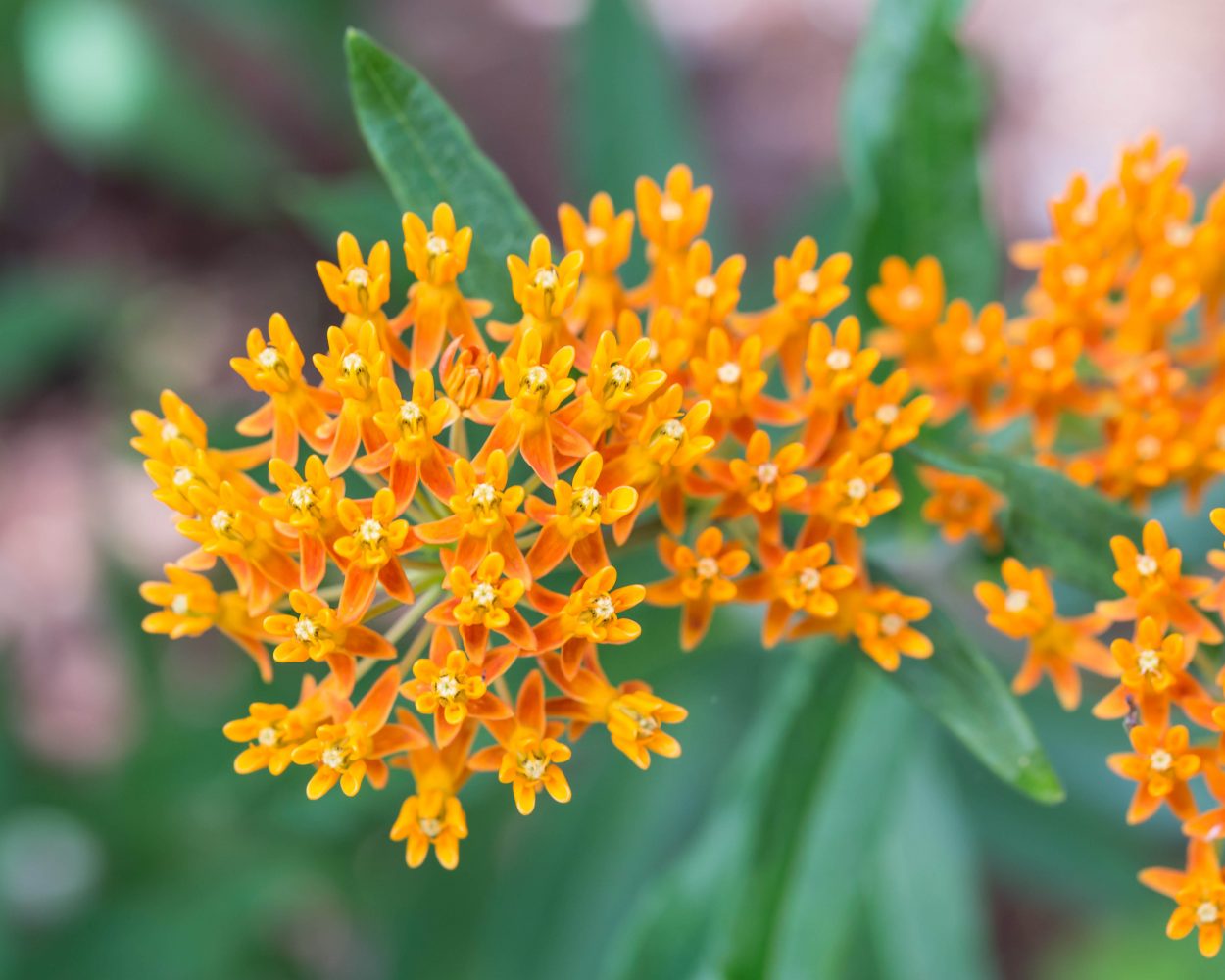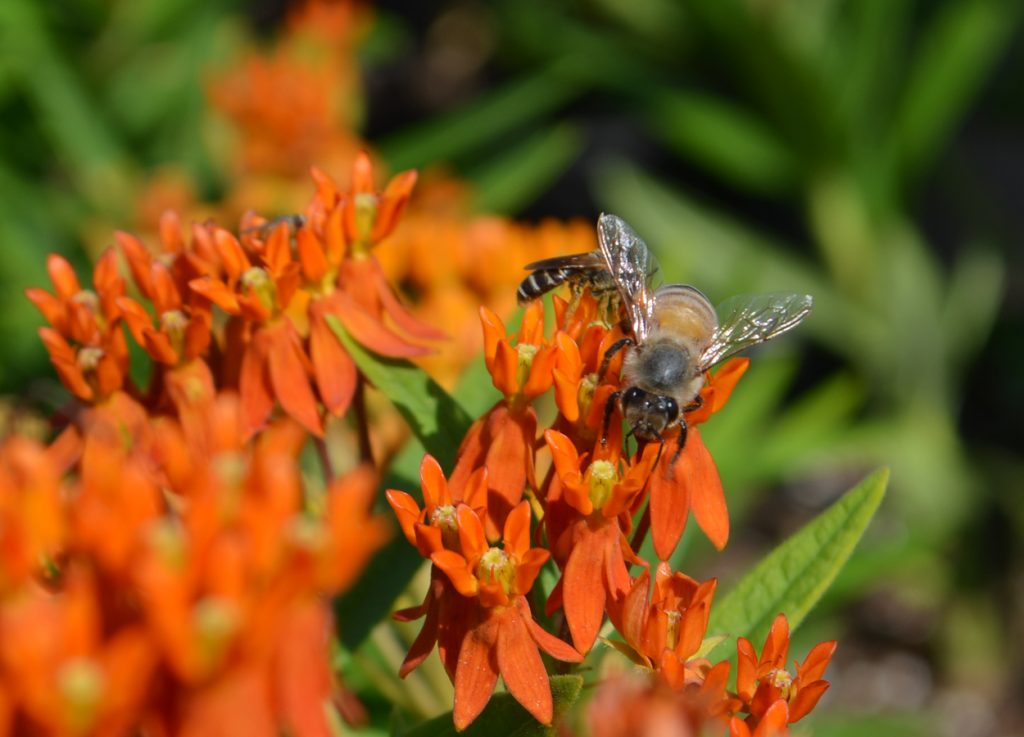Butterfly Weed
Profile of Asclepias tuberosa: a native plant beloved by butterflies and gardeners alike …
Clusters of color. Crown-shaped flowers blaze with bold orange or yellow vibrancy in the summertime.
Nectar and pollen. Butterflies, monarchs, and hummingbirds greedily guzzle its nectar, while only wasps pollinate its flowers.
Weedy or worthy? Butterfly weed may be persistent as wildflowers, but the propagated plant merits respect when used in rock gardens and butterfly meadows.
Nicknames ring true. “Chigger weed” hints at mites that hitchhike on the wildflower’s hairy stems. “Pleurisy root” gives nod to Native Americans who chewed the plant’s tuberous roots as treatment for lung ailments.
Easy does it. Hassle-free and easy-to-grow characterize this popular perennial.
Sow late spring. Then, sit back and enjoy a splendid summertime show!
See what other wildflowers you can plant to attract native butterflies in your garden. For information on other Virginia natives—including bloom times and photos—visit Lewis Ginter’s “What’s In Bloom.”
As published in “Lewis Ginter Magazine,” Summer 2018

